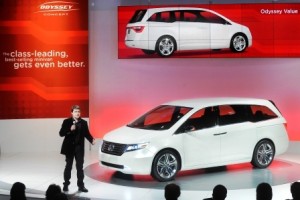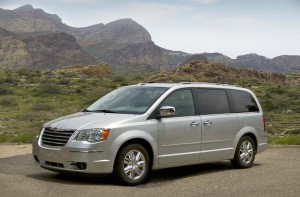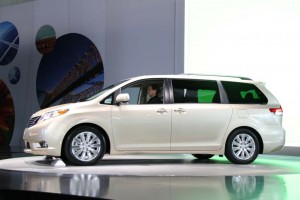With no domestic competitors to worry about anymore, Chrysler has been firming up its hold on the market segment it created, more than a quarter-century ago; but increasing competition from foreign makers threatens to loosen its grip on the minivan market.
In its early years, Chrysler held nearly 100% of the people mover segment, and even into the 1990s, it regularly outsold all its competitors combined, though that dominance slipped in the new millennium. But for the first half of 2010 Chrysler is back on top again – overwhelmingly.
“The last year, the question was whether there’d be someone around to service your car,” says Joe Phillippi, chief analyst with AutoTrends Consulting, referring to Chrysler’s 2009 bankruptcy. “Once you knew they’d be around, people regained confidence in the brand.”
For the first six months of the year, the maker’s Chrysler Town & Country and Dodge Caravan models collectively accounted for 49.1% of the segment. That’s up nearly 10 full points from the same period a year ago, when Chrysler’s minivan share sank to 39.2%. And it only bounced to 42.2% for the full year. But industry analysts warn that the smallest of the Detroit automakers shouldn’t expect to rest on its laurels while it focuses on reviving the rest of its struggling line-up.

Honda only previewed a prototype in Chicago, but expect the 2011 Odyssey minivan to look a lot like it.
Chrysler is facing an array of competitors in the broad people-mover market, both from the U.S. and abroad. While Detroit’s other manufacturers, Ford and General Motors, walked away from the minivan market, several years ago, they’re still looking for ways to resonate with buyers. Ford, for one, has had a moderate degree of success with its big Flex, a sort of station wagon/minivan hybrid. The Dearborn maker plans to follow with what might be called a micro-minivan, the American version of its European C-Max people mover.
Meanwhile, the two Japanese leaders are getting ready for a renewed assault on the distinctly American minivan market. In recent months, both Honda and Toyota have unveiled new versions of their own models.
The next-generation Honda Odyssey, first shown at this year’s Chicago Auto Show, attempts to break from its boxy past with a design that is both more athletic and aerodynamic, with a roofline that is almost coupe-like. If the past is prologue, Honda is likely to add a number of new safety, comfort and convenience features to challenge Chrysler – which itself launched innovations like its Swivel-and-Go seats and live television service for its latest Caravan and Town & Country models.
Toyota’s next-generation 2011 Sienna made its debut last December, and didn’t try to disguise its purpose, as some minivan makers have, over the years. It’s a cleaner, more contemporary looking van, with some attractive details like the virtually invisible sliding door rails. Toyota will offer five distinct configurations of Sienna, as well as all-wheel-drive, something Chrysler has abandoned.
But while Toyota division General Manager Bob Carter says he hopes to see the ’11 Sienna gain both sales and share, he concedes, “The minivan segment is shrinking.”
Often disdained as the soccer-mom-mobile, minivan sales plunged from their 2000 peak of 1,371,234 to just 415,173 in 2009 – barely what Chrysler alone sold during the segment’s heyday. While volumes are up from last year’s recessionary low, few expect the minivan market to do much better than 500,000 this year, or to ever come close to its former glory.
But reports of its demise are greatly exaggerated, cautions Phillippi. “There’s a cohort of people – like my daughter – who just can’t jam a big family into a sedan or SUV.” For them, the minivan, he says, is the only viable option. The only question is who will be dominant in the smaller, more competitive segment.


